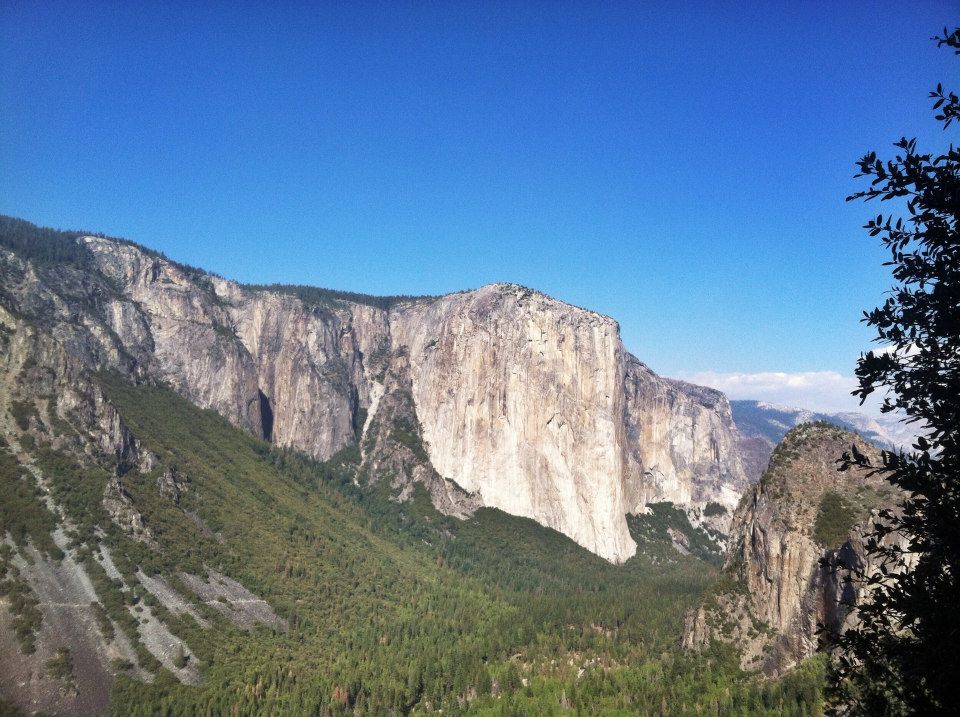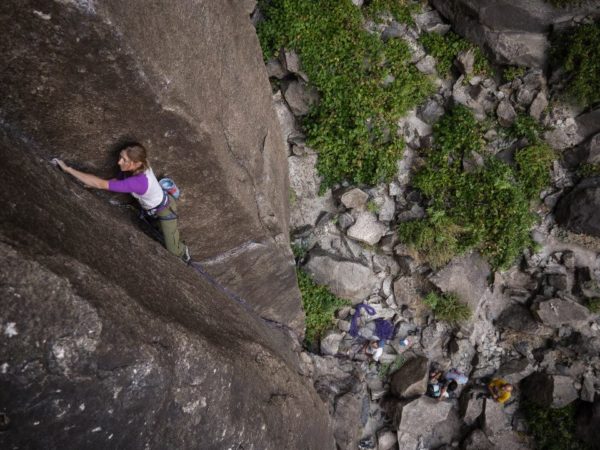If you’re a California climber, you’ve heard about falcon closures. We caught up with a raptor monitor at Yosemite National Park to find what goes into these closures.
Yosemite National Park has been able to foster one of the most symbiotic relationships between peregrine falcons and climbers in the world. Sarah Stock, the wildlife biologist who oversees the bird and mammal projects for the park, works with other ornithologists to monitor the nests and breeding activity of the birds. Since 2009, Crystal Barnes, the full-time raptor monitor in Yosemite, has been assisting Stock with monitoring and managing the climbing closures in the park.

Currently, there are 14 pairs of birds in the park. 10 pairs are breeding and 9 of their nests, known as eyries, have been located. “Of the nesting pairs, 4 have successfully hatched young on The Rostrum, Rhombus Wall, Arch Rock, and Cascade Cliffs. The nest at Wapama Cliffs is suspected to have hatched young, and all other nesting pairs are still incubating with late breeding being observed at El Capitan’s SE Face. This pair is one month behind the typical egg-laying period for peregrines in Yosemite National Park,” said Crystal Barnes.
Regarding closures, Stock said, “Every bird has a different experience.” Each nesting pair needs to be handled on an individual basis. On May 13th, park ranger Ben Doyle ascended South by Southwest, a 5.11 route on Lower Cathedral Spire. The climb comes within a hundred yards of a new eyrie where a pair of peregrines are nesting. Barnes observed the behavior of the birds as Doyle climbed past them. In this case, the birds were unaffected by the climbers.
“If the birds aren’t disturbed by climbers we can keep areas open,” said Stock. To date, observations have shown no disturbance to the birds on the Southwest Face of El Capitan by climbers on the nearby Salathe Wall. The first ten pitches of the closed El Capitan routes remain open as do the beginnings of other Yosemite big wall routes.
Alternatively, last year a pair of peregrines nested and bred above the first pitch of Pretty In Pink Point on Tuolumne’s Medlicott Dome. A dead nestling was found at the base below the eyrie, and the nestling’s age at time of death corresponded to the date when two climbers violated the climbing closure.
“When climbers are too close to a nest, they can cause the birds to abandon the nest. Left unattended the nest becomes vulnerable to heat and cold exposure, ravens and other predators,” said Stock. The stress can cause nestlings to leave the nest prematurely.
Beyond establishing signs at the base and notices around the park to keep the bird from being disturbed by climbers, Stock has informed park helicopter pilots of the birds locations so the pilots can avoid coming too close to the nest.
Typically closures start in March 1st when the birds begin courting and finding their nesting sites. By April they start incubating. The fledglings hatch in June and the closures lift in the middle of July, allowing a few weeks for the juveniles to learn to fly and leave their nest site. Last year, Stock and Barnes pushed up the opening date of the climbing closures. They analyzed the nesting data and determined that pushing the date forward from August 1st to July 15th still gives the fledglings enough time to learn necessary flying and hunting skills : “After observing the birds year after year, we’re gaining a better idea of how to manage the closures. We try our best to only close areas that are absolutely necessary to protect the nests” said Stock.

Often, peregrines return to their nesting sites. The pair on the Rostrum have nested half way up the formation for years. Birds have returned to nest sites on the Rhombus Wall and in other locations. At times, the birds change because of failures in a nesting area. Recently, a pair shifted from a nesting site on the North America Wall to one on Mescalito, from an eastern site to a western one.
Why go to all the trouble? Peregrines were once an endangered species. Thin eggshells due to DDT and other pesticides resulted in unborn babies. In 1973 the government outlawed DDT and in the 1980s the birds began recovering. In 1995, five pairs of peregrines flew into Yosemite. Thanks to the hard work or scientists and the cooperation of the climbing community, that number has tripled.
“2013 marks the 14th year after the delisting of the peregrine falcon from the Federally Endangered Species List. As of November 2009 the peregrine falcon has been de-listed from the state of California’s Endangered Species List,” reported Barnes.
A large part of the peregrine’s recovery has been due to the diligence of the park service and the respect that climbers have shown towards peregrine nesting sites. Stay up to date on the current peregrine closures and learn more about the birds at the NPS website.

